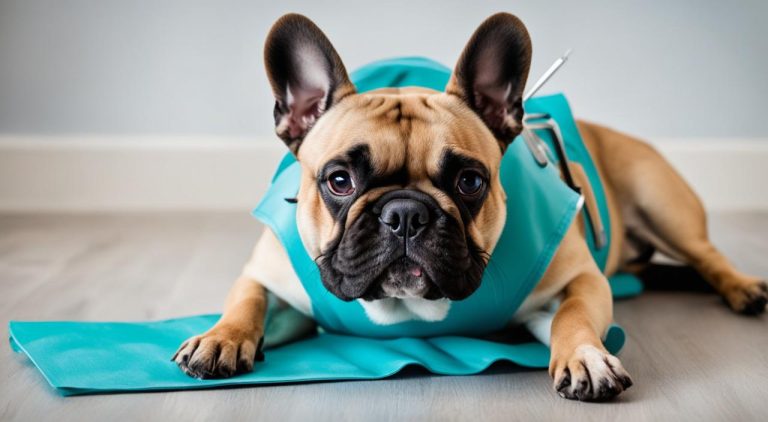French Bulldog Anatomy Organs: A Comprehensive Guide
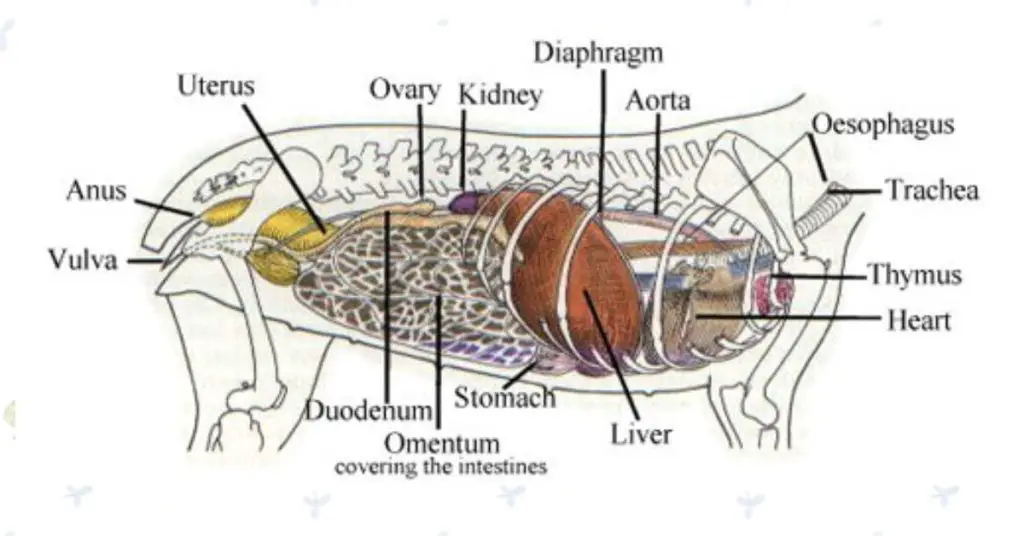
The unique anatomy of the French Bulldog sets it apart as an endearing and beloved breed.
Understanding the internal structure and organs of these charming canines is essential for their health and well-being.
From their distinctive bat-like ears to their playful nature, French Bulldogs captivate the hearts of dog lovers worldwide.
Delving into their anatomy provides valuable insights into their special characteristics and care requirements.
Anatomy of a French Bulldog

French Bulldog Standard Anatomy At Glance
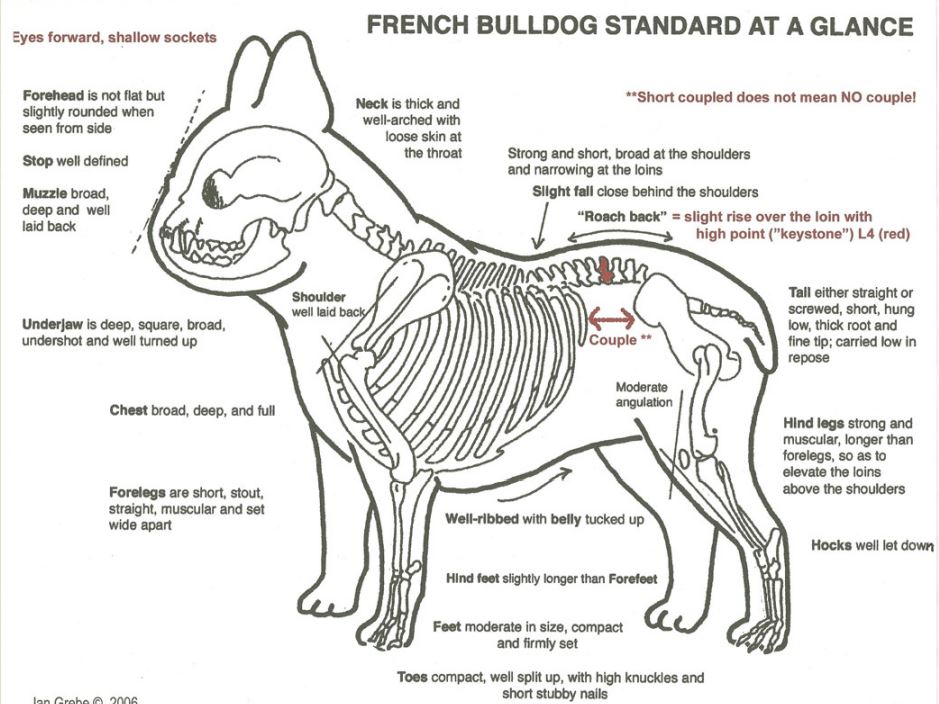
Physical Characteristics
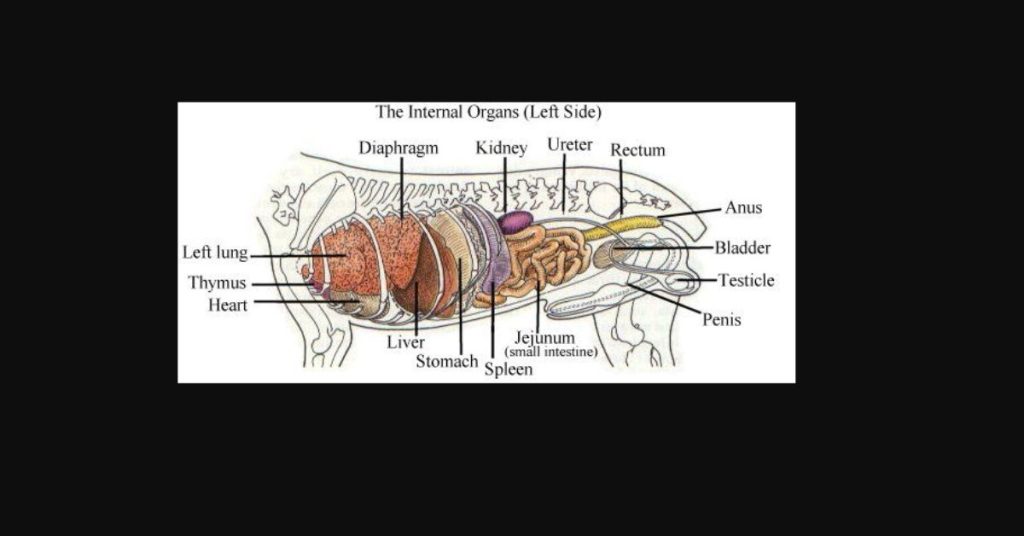
The French Bulldog is a compact, muscular, and medium or small-structured dog with heavy bone.
Their expression is alert, curious, and interested, reflecting their active and intelligent personality.
Typically, they have a weight range of 16-28 pounds and a height of 11-12 inches at the shoulders. Proportion and symmetry are essential aspects of the breed’s appearance.
External Anatomy
The French Bulldog’s physical appearance features a short, smooth coat and a loose, soft skin that covers their muscular body.
Their head is large and square, with a well-defined stop (where the muzzle meets the forehead) and rounded skull.
The breed’s signature feature is its distinct erect, bat-like ears that stand straight and alert, pointing slightly forward.
The neck is thick and well-arched, transitioning smoothly into well-laid back shoulders.
The chest is broad and deep with ribs well-sprung and the back is strong, straight, and of medium length.
The rump is slightly rounded with a low tail set, which can be straight, screwed, or curly. The base should be thick and tapering to a fine point.
Skeletal Structure
A French Bulldog’s robust skeletal structure supports its muscular build. With around 320 bones in their body (depending on the tail length), the breed has a strong and sturdy frame. Some distinctive features of their skeletal makeup include:
- A broad chest with well-sprung ribs that provide ample space for internal organs
- A strong, straight back that creates a level topline
- A heavy-boned hindquarters to support the breed’s active lifestyle
- A thick, well-arched neck
Understanding the general anatomy of a French Bulldog helps owners and breeders appreciate the breed’s unique physical characteristics, which contribute to their charm as a beloved pet.
Head and Facial Structure
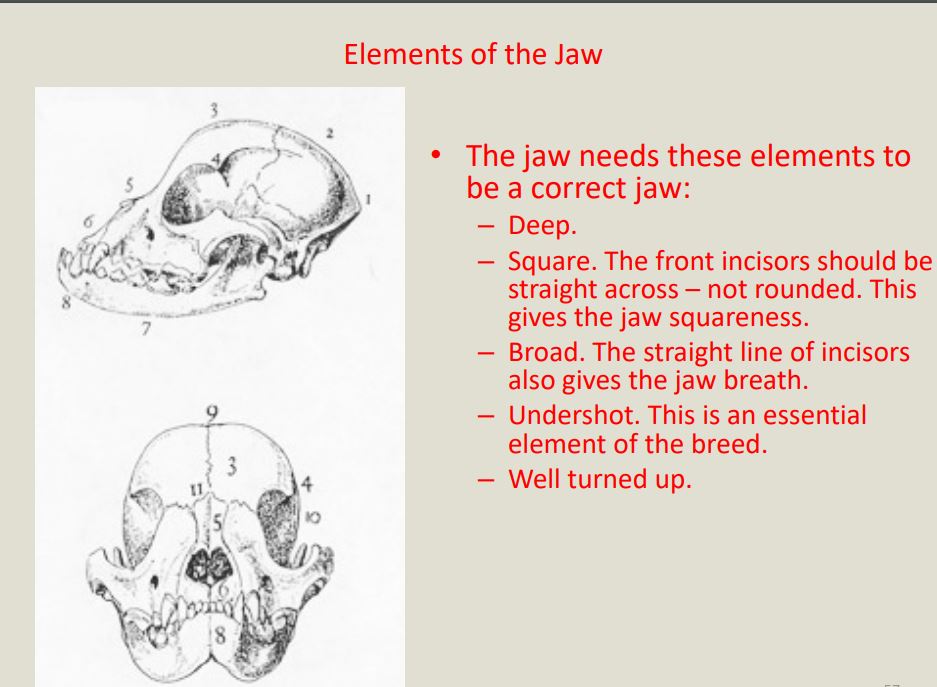
Skull
The skull of a French Bulldog is characterized by its unique structure, often referred to as brachycephalic or having a shortened skull. This distinct shape is a result of the breed’s genetic makeup and contributes to their loving and adorable appearance. The broad, rounded forehead and deep skull provide a solid base for the brain, while their wrinkled skin emphasizes their expressive features.
Muzzle and Nose
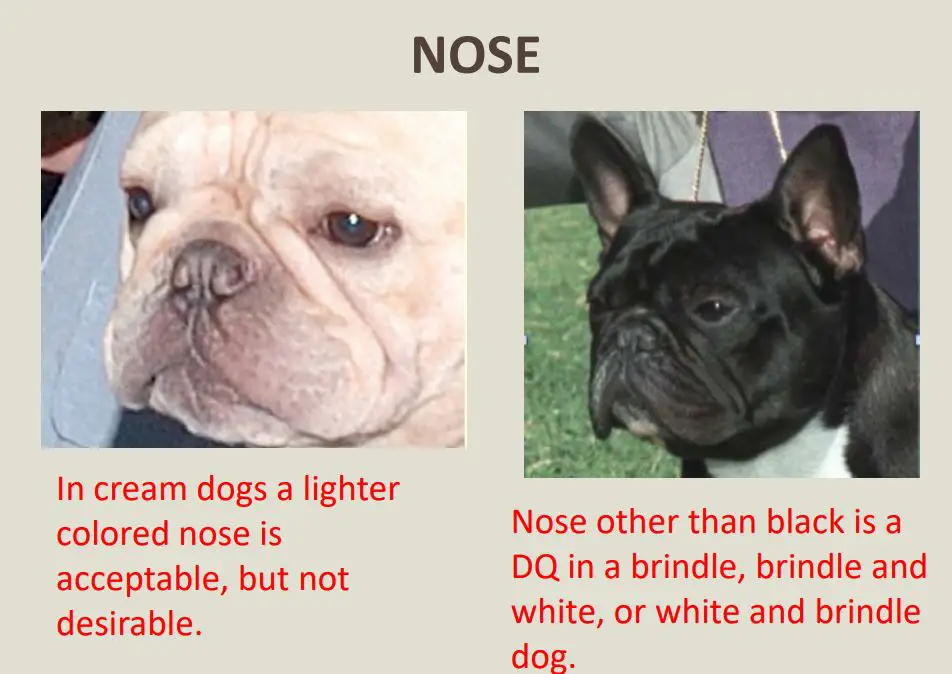
A key aspect of the French Bulldog’s facial structure is its brachycephalic muzzle. This shortened, compact muzzle is what gives them their recognizable “squished” face. The breed’s eye-catching flat nose sits snuggly within its elongated muzzle, often white in color. This anatomy enhances the breed’s cuteness, but can also potentially lead to breathing difficulties due to its compact nature.
Table summarizing key features of the muzzle:
| Trait | Description |
|---|---|
| Muzzle Length | Shortened and compact |
| Nose Shape | Flat |
| Color | Often white, but varies with coat |
Eyes and Ears
French Bulldogs are known for their wide-set, expressive eyes and large bat-like ears. Their eyes are usually dark, round, and set deep within the head, giving them an irresistible, soulful gaze.
The breed’s signature bat ears are naturally erect and broad at the base, tapering to a rounded tip.
These perky ears not only add to their charm, but also improve their hearing capabilities.
It is important to note that wrinkles around the eyes and nose should be wiped and cleaned to ensure healthy skin and avoid excessive tearing or irritation.
List of key eye and ear features:
- Eyes: Wide-set, round, and deep
- Ears: Bat-like, erect, and broad at the base
Through understanding the unique head and facial structure of French Bulldogs, we can better appreciate their captivating appearance while also being aware of their potential health concerns related to their brachycephalic anatomy.
Internal Organs and Systems
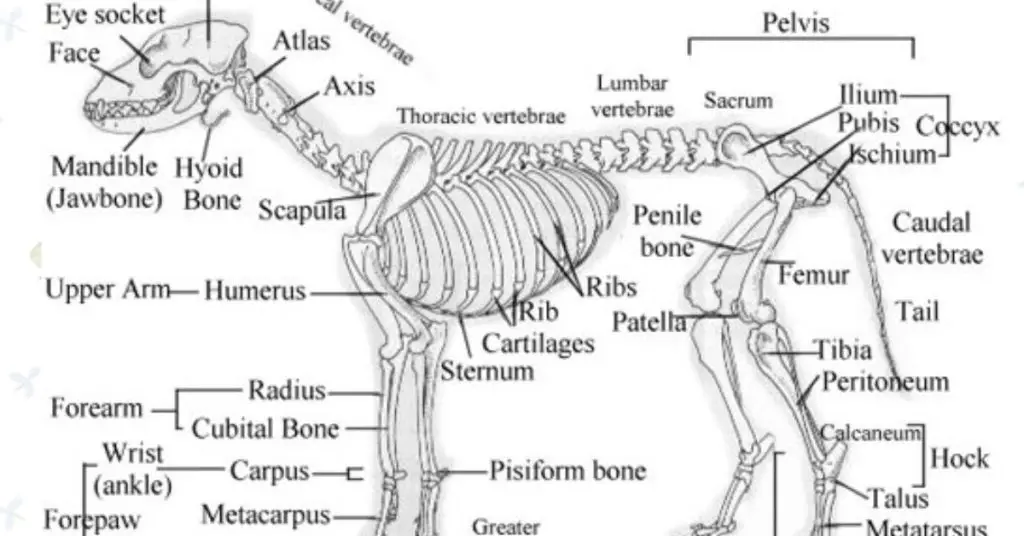
Respiratory System
The respiratory system of a French Bulldog consists of its lungs and trachea.
The lungs are responsible for the exchange of oxygen and carbon dioxide, while the trachea serves as a passage for air to travel to and from the lungs.
Due to their brachycephalic nature, French Bulldogs may experience difficulties in breathing, making it essential for owners to monitor their breathing patterns.
Digestive System
The digestive system of a French Bulldog is comprised of several essential organs, including the esophagus, stomach, and intestine.
The esophagus carries food from the mouth to the stomach, where the digestive process begins. The stomach churns and breaks down the food, before passing it on to the small intestine, where nutrients are absorbed.
Lastly, the large intestine aids in the absorption of water and electrolytes, while helping to form feces.
- Esophagus: Carries food to the stomach
- Stomach: Breaks down food
- Small Intestine: Absorbs nutrients
- Large Intestine: Absorbs water and electrolytes, forms feces
It is essential for French Bulldog owners to provide their pets with a balanced diet to maintain proper digestive health.
Reproductive System
The reproductive systems of male and female French Bulldogs have distinct structures and functions.
For male dogs, the main reproductive organs include the testicles which are responsible for producing sperm and hormones. In female dogs, the ovaries and uterus are crucial for the reproductive process.
- Male Dog Reproductive System:
- Testicles: Produce sperm and hormones
- Female Dog Reproductive System:
- Ovaries: Produce eggs and hormones
- Uterus: Site for embryo implantation and development
It is essential for owners to have a thorough understanding of their French Bulldog’s reproductive system, especially if they plan on breeding.
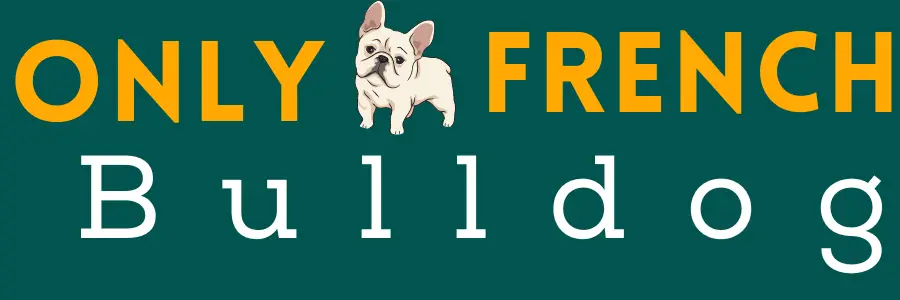




![Why Are French Bulldogs So Popular [Find Out]](https://onlyfrenchbulldog.com/wp-content/uploads/2024/06/why-are-french-bulldogs-so-popular-find-out_3181-768x550.jpg)
